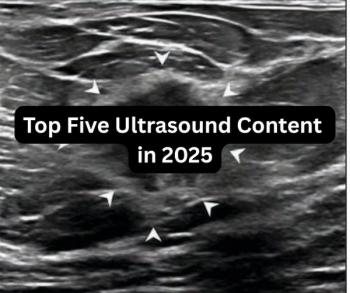
Report from SIR: Lung RFA’s midterm survival rates beat expectations
More than 90% of patients undergoing radiofrequency ablation for primary and secondary lung cancer could outlive their treatment for two years or longer, provided that they don’t succumb to other causes, according to a study presented at the Society of Interventional Radiology meeting in New Orleans.
More than 90% of patients undergoing radiofrequency ablation for primary and secondary lung cancer could outlive their treatment for two years or longer, provided that they don't succumb to other causes, according to a study presented at the Society of Interventional Radiology meeting in New Orleans.
"These outcomes are impressive considering all of the patients are nonsurgical candidates," said principal investigator Dr. Riccardo Lencioni, an interventional radiologist at the University of Pisa in Italy.
Lencioni and colleagues prospectively enrolled 106 patients who underwent CT-guided RFA to treat 186 nonoperable tumors. The multicenter Radiofrequency Ablation of Pulmonary Tumors Response Evaluation (RAPTURE) Trial included 33 patients with non-small cell lung cancer, 53 with colorectal cancer metastases, and 20 with metastases from other types of malignancy.
They found RFA yielded high local tumor control rates and cancer-specific survival outcomes for patients with NSCLC or CRC metastases. CT follow-up three months after the procedure confirmed ablation's effectiveness rate at 93%. Cancer-specific survival rates for NSCLC and CRC metastases showed 91% and 88% at one year, and 91% and 72% at two years, respectively.
Overall survival rates for NSCLC and CRC metastases were 69% and 86% at one year, and 49% and 62% at two years, respectively. The causes of death unrelated to cancer included cardiovascular events in five patients, respiratory failure in three, and undetermined in four. No RFA-related deaths occurred.
Major complications recorded were pneumothorax in 27 patients, pleural effusion in four, pneumonia in two, and atelectasis in one.
Patients underwent CT-guided RFA under sedation or general anesthesia using 150- to 200-W generators and multitined expandable electrodes. Follow-up extended through 27 months (mean = nine months) and included CT examinations at one and three months after the procedure and at three-month intervals.
Research findings also suggest that RFA can bolster lung cancer patients' survival without worsening their quality of life, Lencioni said.
For more information from the Diagnostic Imaging archives:
Newsletter
Stay at the forefront of radiology with the Diagnostic Imaging newsletter, delivering the latest news, clinical insights, and imaging advancements for today’s radiologists.




























